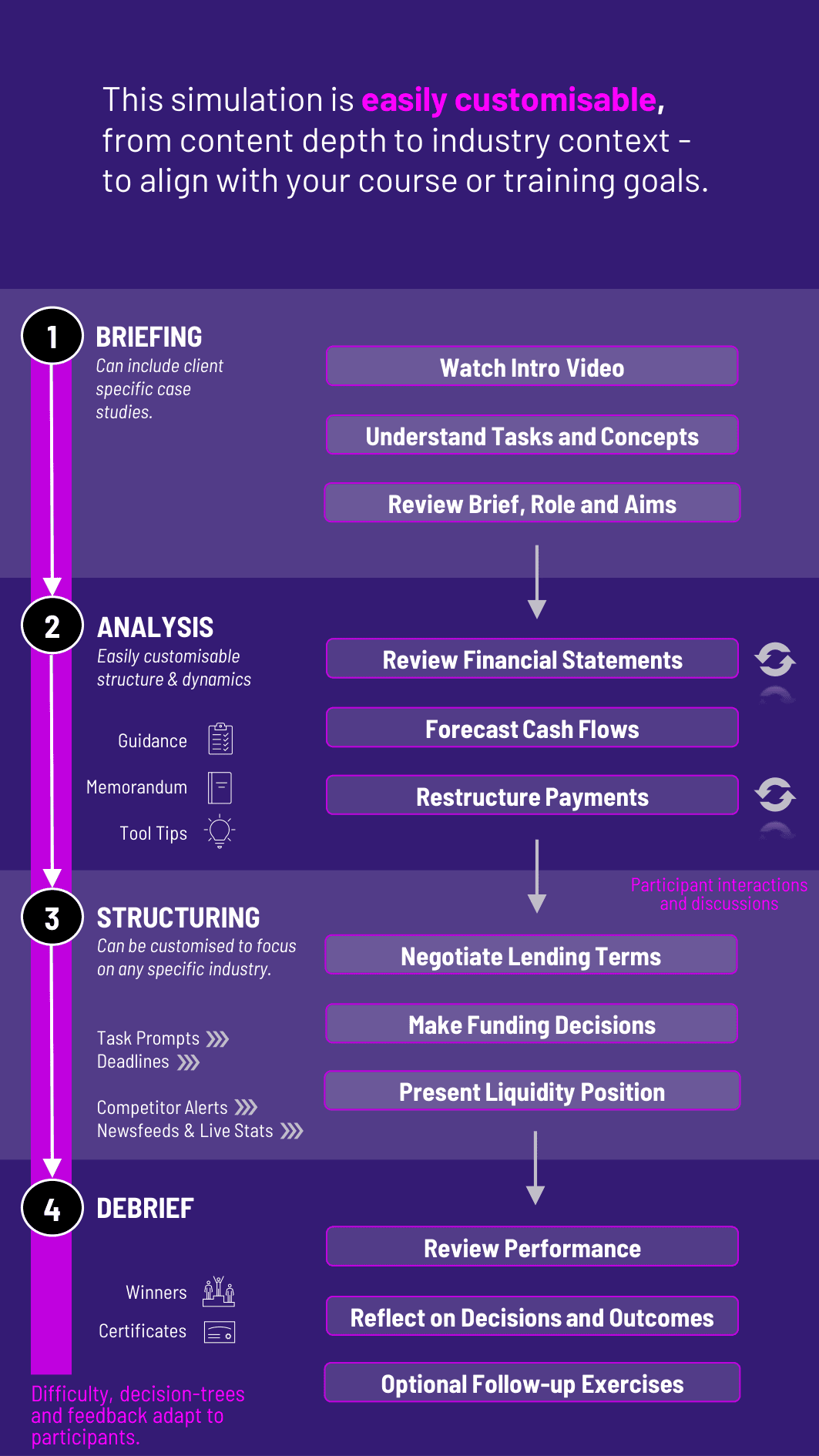
Students step into the role of corporate finance leaders, managing short-term funding decisions, negotiating with creditors, and navigating liquidity crises under pressure in our Liquidity Risk Management Simulation.
This simulation brings key corporate finance and treasury concepts to life, including:
Cash Flow Forecasting: Tracking inflows and outflows across operating, investing, and financing activities
Liquidity Ratios: Interpreting current ratio, quick ratio, and operating cash flow ratios
Working Capital Management: Adjusting payables, receivables, and inventory levels
Short-term vs Long-term Financing: Evaluating trade credit, lines of credit, commercial paper, and equity injections
Liquidity Risk Assessment: Managing covenant breaches, creditor confidence, and reputational risk
Stress Testing: Simulating external shocks such as delayed payments, supply chain disruptions, and interest rate changes.


Review real-time financial statements, debt covenants, and short-term obligations
Create rolling 13-week cash flow forecasts based on operational data
Prioritize payments and restructure payment schedules under liquidity constraints
Negotiate with banks and investors for bridge loans or working capital support
Make funding decisions: internal cash, short-term borrowing, or equity
Respond to news events that impact liquidity, such as client defaults or supplier delays
Present a final liquidity position to the board, justifying decisions and future readiness
Through this simulation, students develop practical financial judgment and real-world crisis-management capabilities. They will learn how to:
Diagnose liquidity stress before it becomes a solvency issue
Manage trade-offs between operational needs and financial prudence
Make funding decisions based on urgency, cost, and risk exposure
Understand the interplay between liquidity risk and reputational risk
Communicate under pressure to internal and external stakeholders
Balance short-term survival with long-term financial health
What prior knowledge is required? Students should be familiar with basic financial statements and concepts such as working capital, debt, and cash flow. No advanced modeling required.
Is the simulation individual or group-based? It can be run as a single-player exercise or as a group simulation with teams representing different internal stakeholders (e.g., treasury, operations, investor relations).
How long does it take? The simulation typically runs across 3–5 rounds and can be completed in a 2.5–3 hour class session, or extended into a multi-day workshop.
What devices or platforms are needed? The simulation runs on any modern browser - no downloads required. It works on laptops and tablets.
How is student performance evaluated? Evaluation includes simulation scoring (cash balance, covenant compliance, stakeholder trust), decision logs, and group presentations or written board memos.
Join this 20-minute webinar, followed by a Q&A session, to immerse yourself in the simulation.
or
Book a 15-minute Zoom demo with one of our experts to explore how the simulation can benefit you.